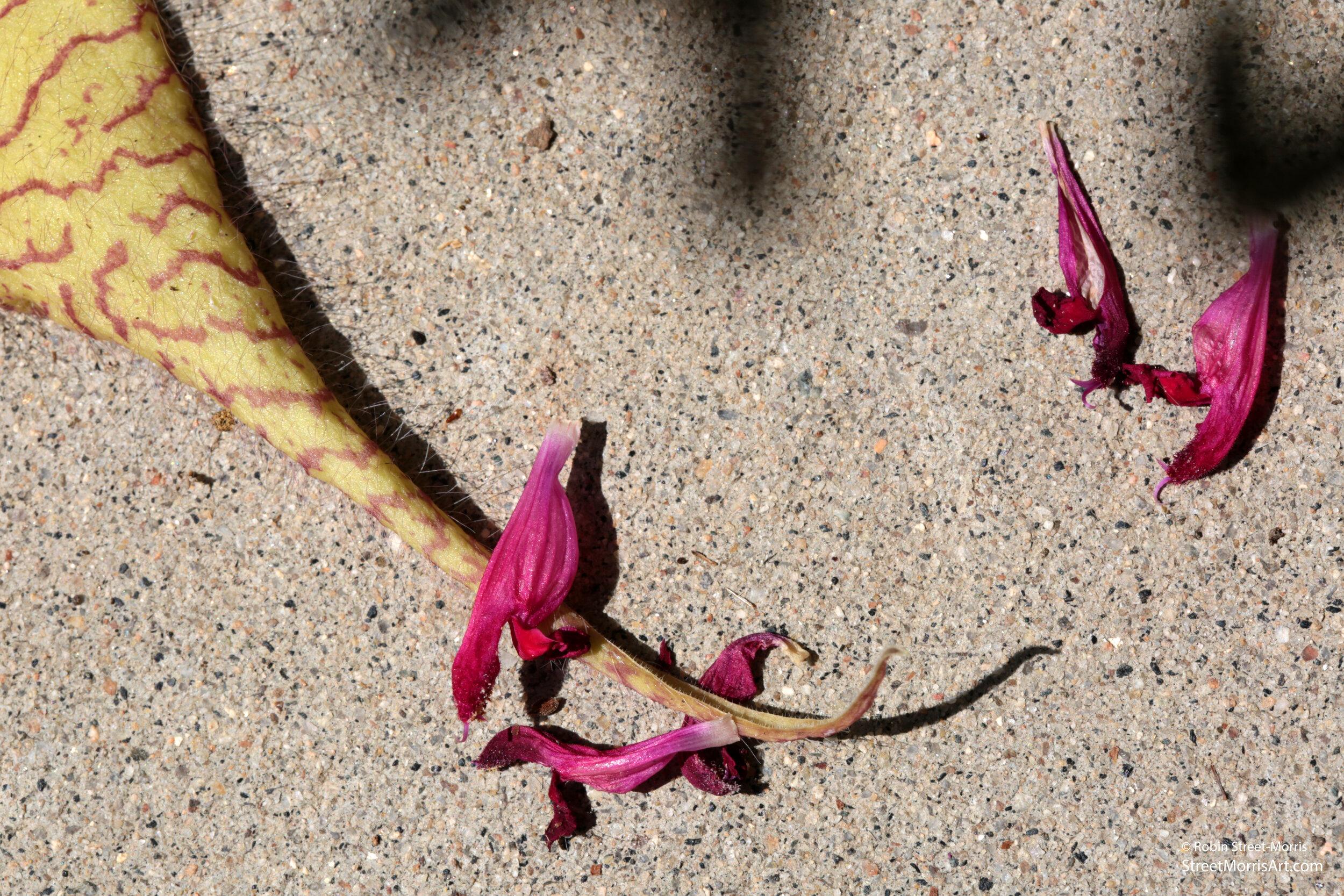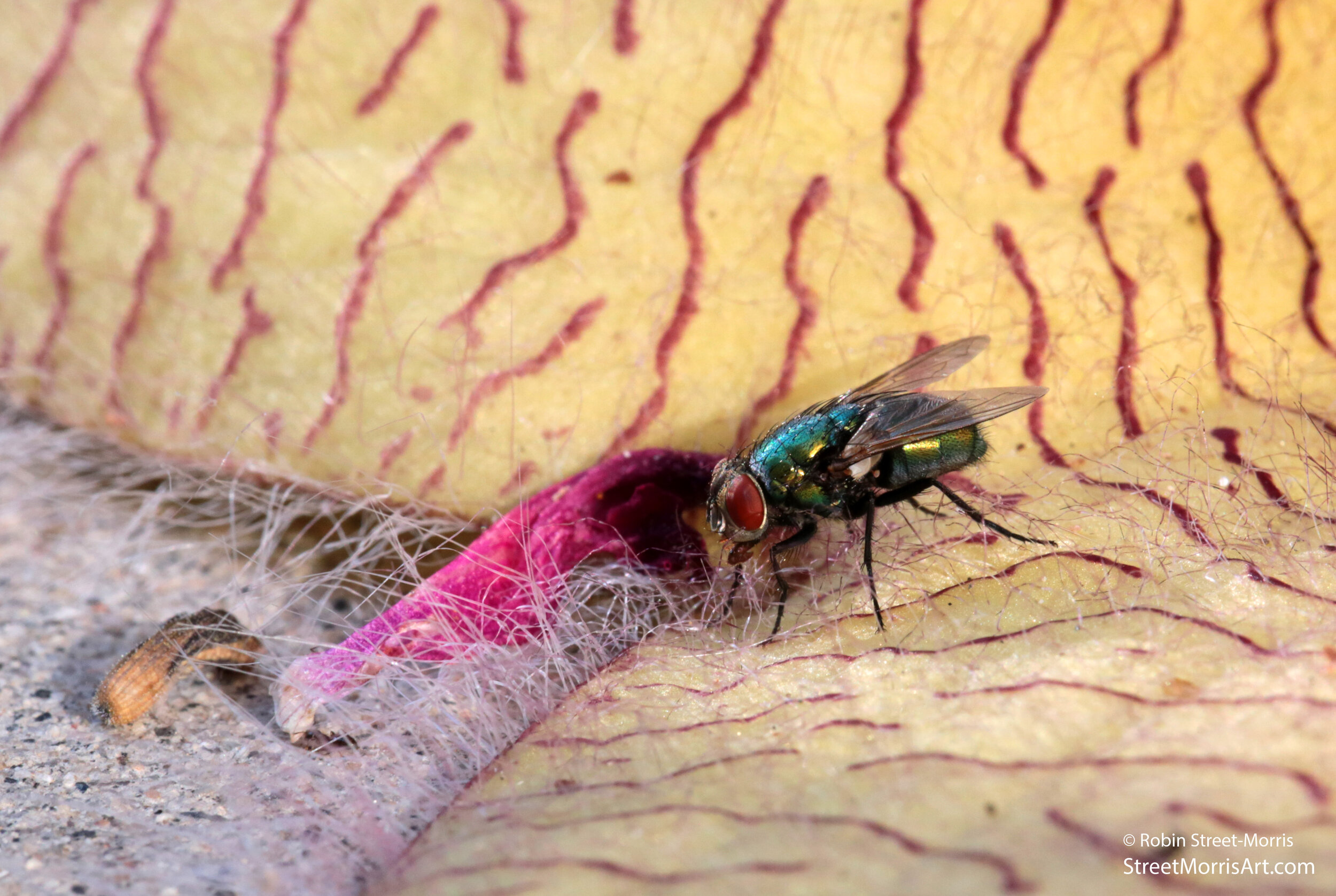The beauty of the Zulu giant’s enormous blooms overshadows the fetid odor they produce. They mimic the smell of carrion to attract fly pollinators which are ubiquitously distributed even in the harsh southern African deserts this species is native to. As you will see in this brief photo essay, a green bottle fly carefully deposited larvae around the cilia (hairs) of the blossom toward the end of her visit to it. The plant offered her progeny no nutrition like rotting meat or feces would have, so they were destined to starve. Argentine ant predators began carrying off the larvae to their nest even before she’d finished giving birth.
This plant has been growing well for years in a narrow garden near our front door where it’s somewhat protected from San Diego’s winter rains in order to keep it from rotting. Salvia ‘Royal Bumble’ acts as its nurse plant, both providing it with a bit of shade and giving the hummingbirds yet another food source to fight over.
Like Stapelia gigantea, Huernia zebrina has been attracting flies much to the delight of the resident lizards. You can see the larvae if you look closely below. It’s sometimes called lifesaver plant or lifesaver cactus. These species aren’t cacti, but rather members of the milkweed subfamily Asclepiadaceae.







